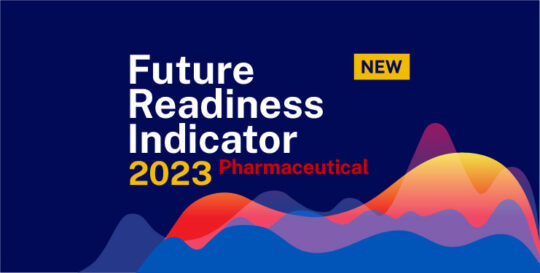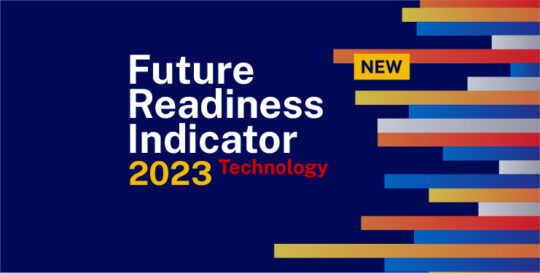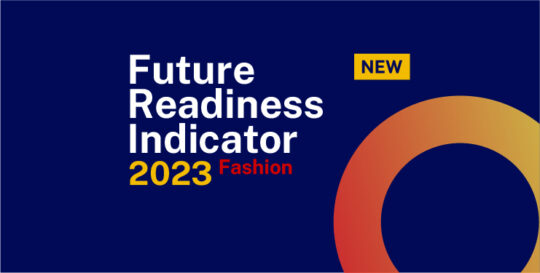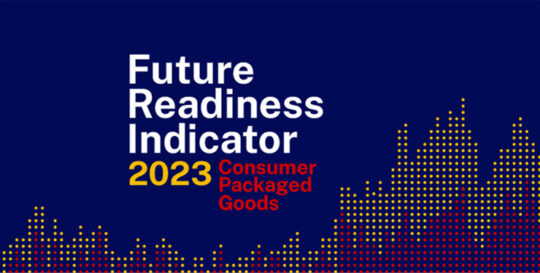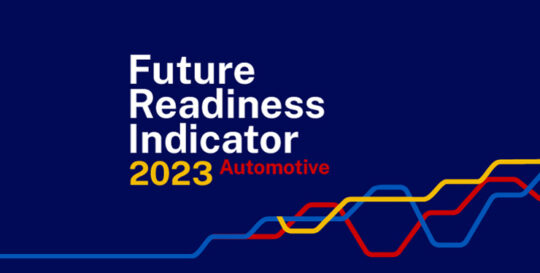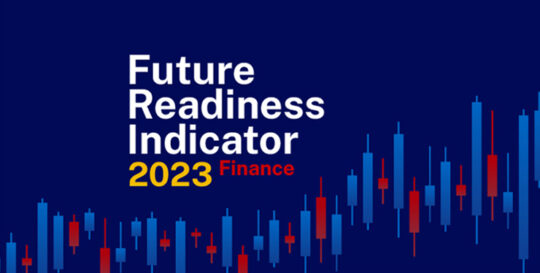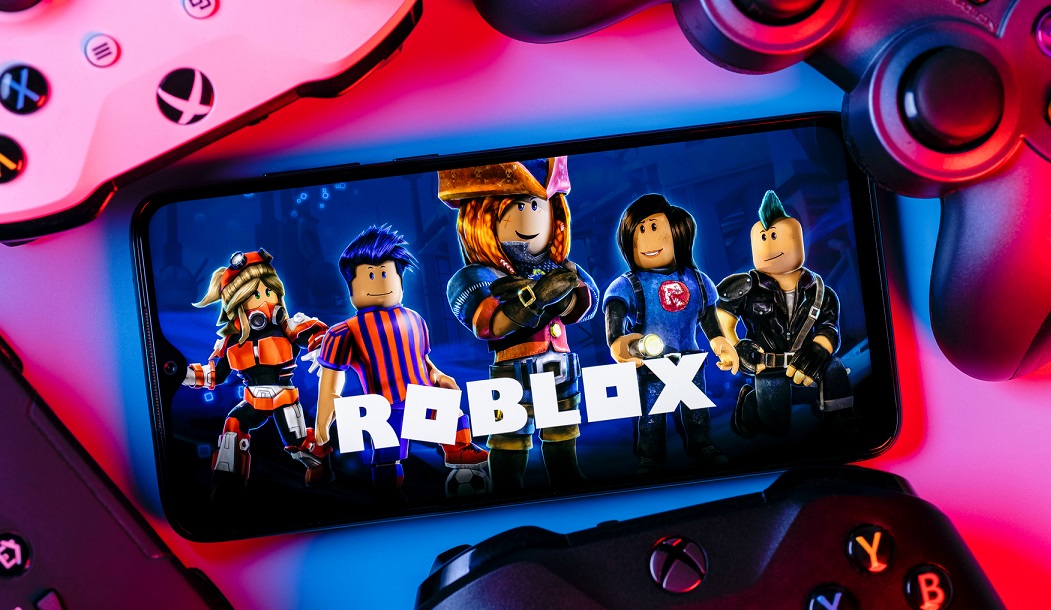IMD business school for management and leadership courses



Unveiling 2023’s Future-Proof Front Runners in Automotive, Consumer Packaged Goods and Finance
IMD’s 2023 Future Readiness Indicator has ranked 68 of the world’s top revenue-generating players in Finance, Automotive, and Consumer Packaged Goods , in terms of their ability to anticipate tomorrow’s challenges while limiting today’s risk exposure
- Strongest auto players (Tesla, BYD and Volkswagen) are innovating in battery-run vehicles, autonomous vehicles, and in-house expertise in microchips. Tesla fends off hot competition from China’s new kids on the block to maintain number-one spot.
- Top-ranking CPG players (Coca-Cola, P&G and L’Oréal) are using artificial intelligence to innovate and keep consumers’ interest. Laggards are falling because of their reliance on traditional methods, resulting in stagnant offerings and unnecessary complications.
- Mastercard, Visa, and JP Morgan Chase lead finance ranking in part due to their expert integration of financial services into apps and digital wallets. Firms that hesitate to embrace digital transformation fully find themselves struggling to keep up with customer expectations.
IMD’s Center for Future Readiness has released part one of its 2023 ranking of the world’s top companies, shedding light on how leaders in finance, automotive, and consumer packaged goods (CPG), can invest in industry-specific, long-term strategies and capabilities that will pay off over time.
The report assessed 68 major companies across the world, including many in the US, Asia, and Europe. The top-ranking organizations were found to not only plan, but also actively implement their visions with groundbreaking product innovation. Unique to the research method in this annual ranking is a balanced scorecard based on hard data, and the use of an AI-powered big text analytics tool that offers insights into companies’ behaviors, by analyzing reports and articles from 70 news sources over a decade.
The ranking takes an average score of companies’ performance across the seven areas of: financial fundamentals, investor expectations, business diversity, employee diversity/ESG, research and development, early innovation results, and cash and debt.
______________________________________________________
Automotive Companies That Scale Capabilities Like Chipset Design And Software Are Winning
The results of the auto industry show the meteoric rise of newer players like BYD and XPeng as the industry pivots toward new capabilities, such as chipset design, battery manufacturing, and software.
Tesla secured the top spot, evidenced by its increased revenue and profit, despite pressure from rising competition. Chinese automaker BYD, backed by Warren Buffett, surged to number two, primarily due to its enormous ability to produce both batteries and microchips, making it completely self-sufficient.
VW’s aggressive push towards battery-run electric vehicles and autonomous vehicles paid off, allowing it to expand its global footprint further, and secure the number-three position. Meanwhile, the conservatism of Toyota has dragged the company down, causing it to drop outside of the top five positions for the first time in more than a decade.
Top-ranking carmakers are aggressively cultivating in-house expertise in micro chipsets. Rather than relying on suppliers or their sub-suppliers for semiconductors, they are directly engaging with chipmakers and doing the relevant designs in-house, the report found. Ford collaborated with US chipmaker GlobalFoundries to create chips for its vehicles, while exploring the prospect of expanding domestic chip production. Such an approach is also common practice among the newer, more self-sufficient carmakers such as Tesla and China’s BYD and XPeng, who all have extensive operations dedicated to designing or even producing their own chipsets.
“The industry is at a crossroads. Car production in the UK boosted the economy’s output by over 13% in February 2023 as supply-chain pressures subsided. But it would be unwise to conclude that things are back to normal,” said Yu. “Demand for chips is likely to remain highly unpredictable in the future as we see the rollout of technologies like AI, the Internet of Things, and 5G/6G.
“Historically, most carmakers have focused on the final assembly. From the boardroom to the shop floor, their expertise lies with mechanical engineering. Today’s strategic shift requires a change in leadership background, a shift of power among senior executives, and the creation of an environment to attract new talent,” said Professor Howard Yu, director of the IMD Center for Future Readiness. . “That’s what distinguishes the winners from the laggards.”
______________________________________________________
Top-Ranking CPG Companies Are Embracing AI-Driven Innovation
Companies like Coca-Cola, P&G and L’Oréal top the CPG ranking as they succeed in both product innovation and end-to-end innovation, from material sourcing to social engagement, the report found. This dual strategy is driven by digital technology, automation, advanced analytics, and — increasingly — generative AI.
“The CPG sector is particularly vulnerable to consumer spending confidence. A looming recession and inflation pressures hurt. Top players successfully achieve scalable innovation that consumers find worth paying for. Laggards struggle because they fail to build these advanced systems. They stick to a traditional approach, focusing on growth through M&A and cutting costs. As a result, consumers lose interest in their stale offerings. Once a company gets stuck, they can’t attract top talent, leading to a downward spiral,” said Yu.
Top players leverage AI and analytics for everything. Coca-Cola uses AI to predict beverage demand in 200 countries, serving 20 million customers. It evaluates campaign effectiveness across diverse channels, platforms, formats, audiences, and messages. By identifying top-performing campaigns, measuring ROI in 40 markets, and allocating resources wisely, they optimize supply-chain planning, inventory, production, and distribution. This data-driven, highly automated approach ensures efficiency across channels, regions, and time periods, the report explained.
L’Oréal similarly employs AI and analytics to create personalized beauty boxes, based on customer preferences and profiles. It uses AI to develop new hair-color shades inspired by social-media trends. P&G’s Olay Skin Advisor app, powered by AI, analyzes users’ selfies and skin conditions to recommend products.
Top-ranking companies also go after new markets, the report found. Coca-Cola has introduced Topo Chico Hard Seltzer, a low-calorie, low-sugar, gluten-free option. P&G has created a new line of laundry detergents called Tide Simply Clean & Fresh that offers effective cleaning at a lower price point. L’Oréal’s campaign “By Garnier, Naturally” focuses on natural ingredients, eco-friendly packaging, and social initiatives.
In the world of CPG, it’s not just about what you sell or make; it’s about how you make it — and sell it.
______________________________________________________
US Finance Firms Dominate As They Embrace Borderless Collaboration
Mastercard, Visa, and JP Morgan Chase remain the financial service providers best prepared for future growth. While US businesses dominate the finance ranking, the UK has one contender in the top 10 and companies in China have fallen due to the country’s economic deceleration and tightening regulations in the fintech realm.
The companies leading the field are capitalizing on opportunities to integrate financial services into everyday tools like loyalty apps, digital wallets, and other online shopping platforms, in innovative ways that their competitors are struggling to adapt to.
“Making all this work are application programming interfaces (APIs), the behind-the-scenes tools that help different programs and organizations communicate,” observed Yu. “Mastercard and Visa have been working on their API interfaces for decades. But it’s not just about tech solutions. Companies need to embrace a certain way of thinking. It’s about letting outside parties, competitors or not, use what you’ve got and improve on it to make something valuable for users.”
The report pointed out it’s not only payment companies like Mastercard and Visa, nor fintech innovators like PayPal and Block, that are winning. JP Morgan Chase in the US and DBS in Singapore are strides ahead too. In contrast, European counterparts, known for their historical conservatism, “may find this mindset and way of doing business too foreign and unnatural. They will have to find their own way to compete,” said Yu.
HSBC stands out among UK banks for its broad geographic reach and balanced risk exposure, in both Asia and the West. By taking consistent actions to cut costs, streamline its business model, and shift capital to higher-return areas, HSBC has managed to overcome the growth limitations of the UK economy.
But 2023 is a year not to forget the fundamentals. As much as leading companies are forging new partnerships to extend their market reach and product offerings, risk mitigation — building a fortress balance sheet — remains a key concern, as the recent collapse of Credit Suisse, Silicon Valley Bank, and First Republic reminds every banking executive.
